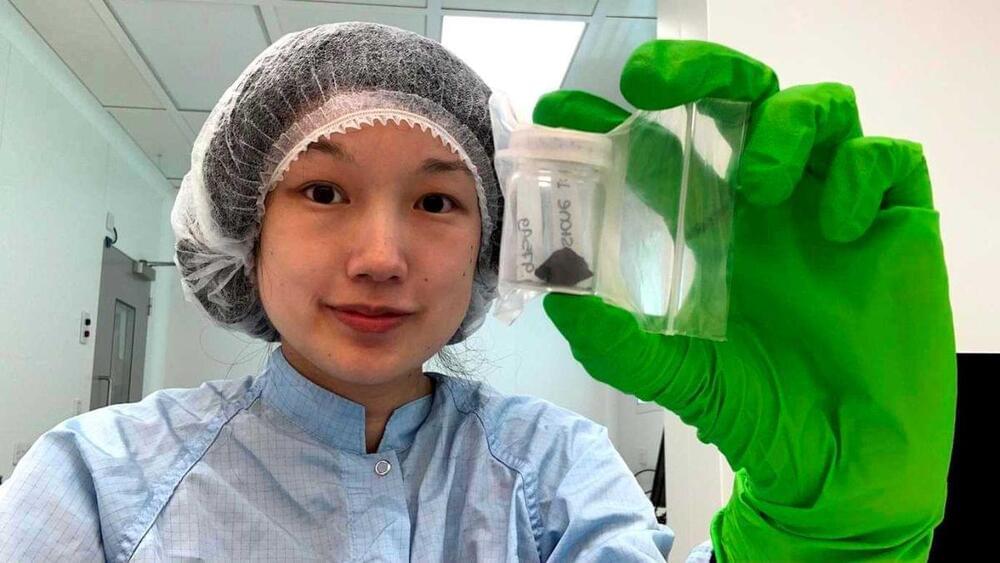The FBI has concluded its investigation on the $100 million worth of ETH heist that hit Harmony Horizon in June 2022 and validated that the hackers responsible for it are the Lazarus group and APT38.


The concept of emergence is controversial to some — for example Eliezer Yudkowski, who favors reductionism, wrote a critique at Less Wrong (see link below). Do reductionists often dismiss emergence?
Ben formalized emergence in his book ‘The Evolving Mind’ as patterns that appear when you put two or more things together that are not there in any of the individual parts.
Book — ‘The Evolving Mind’: http://www.goertzel.org/books/mind/contents.html http://www.amazon.com/Evolving-Futures-General-Evolution-Stu…atfound-20
Eliezer’s post on ‘The Futility of Emergence’ at Less Wrong: http://lesswrong.com/lw/iv/the_futility_of_emergence/
Talking points: EMERGENCE & REDUCTION, CONFUSION REGARDING EMERGENCE, LARGE SCALE NEUROSCIENCE PROJECTS, EMERGENCE AS A WAY OF EXPLAINING AWAY COMPLEXITY, IS CONSCIOUSNESS AN EMERGENT EFFECT? EMERGENCE & ARTIFICIAL INTELLIGENCE
The Attack of the Aliens from Vector Space: Steps Toward a Complex Systems Theory of Categorization and Similarity: http://www.goertzel.org/papers/catpap.html (Emergence & Compression) Extract: “The important concept of emergent pattern is defined: a pattern emerges between two entities if it is present in the combination of the two entities, but not in either of the entities separately. And the structural complexity of an entity is defined as the “total amount” of pattern in it. If the Metapattern is accepted, then these two concepts become essential to any analysis of biological reality.
We turn from these abstractions to a concrete biological example: the mammalian immune system. The theory of clonal selection states that immune systems evolve by natural selection; using the computer simulations of Alan Perelson, Rob deBoer and their colleagues as a guide, we inquire as to the exact nature of this evolution.
It has been believed that Hall thrusters, an efficient kind of electric propulsion widely used in orbit, must be large to produce a lot of thrust. Now, a new study from the University of Michigan suggests that smaller Hall thrusters can generate much more thrust—potentially making them candidates for interplanetary missions.
“People had previously thought that you could only push a certain amount of current through a thruster area, which in turn translates directly into how much force or thrust you can generate per unit area,” said Benjamin Jorns, U-M associate professor of aerospace engineering who led the new Hall thruster study to be presented at the AIAA SciTech Forum in National Harbor, Maryland, today.
His team challenged this limit by running a 9 kilowatt Hall thruster up to 45 kilowatts, maintaining roughly 80% of its nominal efficiency. This increased the amount of force generated per unit area by almost a factor of 10.

Researchers have developed a robot that brings speed, agility and reproducibility to laboratory-scale coin cell batteries.
Until now, laboratories studying battery technology have had to choose between the freedom to iterate and optimise battery chemistry by manually assembling each individual cell, and the reproducibility and speed of large-scale production. AutoBass (Automated battery assembly system), the first laboratory-scale coin cell assembly robot of its kind, is designed to bridge this gap.
Developed by a team from Helmholtz Institute Ulm and Karlsruhe Institute of Technology in Germany, AutoBass promises to improve characterisation of coin cell batteries and promote reproducibility by photographing each individual cell at key points in the assembly process. It produces batches of 64 cells a day.
This is a comparison scale for all living things in the Universe.
The Kardashev scale is a technique for determining a civilization’s technical degree of progress. In 1964, Soviet astronomer Nikolai Kardashev suggested it. Based on the entire quantity of energy that the human species can collect and use, this scale system helps us comprehend how far the human species can progress.
In a recent study that was sent to MNRAS, a group of researchers worked together to use the first batch of data from the James Webb Space Telescope (JWST) to find a candidate galaxy, CEERS-93316, that formed about 250 million years after the Big Bang and set a new record for redshift with a value of z = 16.7. This discovery is very exciting because it shows how good JWST is, even though it has only just started sending back its first set of data. The Cosmic Evolution Early Release Science Survey, or CEERS, was made so that it could be used with JWST to take pictures.
“The past few weeks have been surreal, watching all the records that stood for a long time with Hubble be broken by JWST,” says Dr. Rebecca Bowler, who is an Ernest Rutherford Fellow at the University of Manchester, and a co-author on the study. “Finding a z = 16.7 galaxy candidate is an amazing feeling – it wasn’t something we were expecting from the early data.”
This new study talks about a dozen previous studies that measured objects up to redshifts z 10 using a mix of ground-based observations and the Hubble Space Telescope and Spitzer Space Telescope.


One of the most exciting applications of quantum computers will be to direct their gaze inwards, at the very quantum rules that make them tick. Quantum computers can be used to simulate quantum physics itself, and perhaps even explore realms that don’t exist anywhere in nature.
But even in the absence of a fully functional, large-scale quantum computer, physicists can use a quantum system they can easily control to emulate a more complicated or less accessible one. Ultracold atoms—atoms that are cooled to temperatures just a tad above absolute zero—are a leading platform for quantum simulation. These atoms can be controlled with laser beams and magnetic fields, and coaxed into performing a quantum dance routine choreographed by an experimenter. It’s also fairly easy to peer into their quantum nature using high-resolution imaging to extract information after—or while—they complete their steps.
Now, researchers at JQI and the NSF Quantum Leap Challenge Institute for Robust Quantum Simulation (RQS), led by former JQI postdoctoral fellow Mingwu Lu and graduate student Graham Reid, have coached their ultracold atoms to do a new dance, adding to the growing toolkit of quantum simulation. In a pair of studies, they’ve bent their atoms out of shape, winding their quantum mechanical spins around in both space and time before tying them off to create a kind of space-time quantum pretzel.
#generalrelativitylecture.
General theory of relativity has got a deep understanding. In this General relativity lecture I have explained, the deep philosophical meaning of General relativity. I have also described from Special relativity when we move to General relativity, the entire notion of spacetime changes and why the mathematics becomes difficult. I have also discussed quantum mechanics and general relativity and its connection to string theory. This is a video, which discusses about the nature of development of the process and some deep philosophies which lies in the heart of spacetime.
00:00 — 01:34 — Objectives.
01:35 — 02:58 — Topics.
02:59 — 05:56 — Understanding a system.
05:57 — 12:51 — Consequence of relativity.
12:52 — 18:33 — General relativity is more geometry.
18:34 — 28:49 — What is a classical system.
28:50 — 31:23 — General relativity and Quantum mechanics.
31:24 — 32:53 — General relativity & String theory.
32:54 — 38:14 — Summary and conclusion.
Welcome to General relativity explained.
This channel is dedicated for teaching Einstein’s General Theory of Relativity. In this channel you will come to know everything about General relativity, its mathematics, online resources, books, pdf documents, YouTube lectures and other resources. For those you are starting to learn relativity, this channel will be extremely useful as well as for those who are already in their graduate and post graduate studies.
Best wishes for your endeavor in this wonderful journey.

Polymorphic malware could be easily made using ChatGPT. With relatively little effort or expenditure on the part of the attacker, this malware’s sophisticated capabilities can readily elude security tools and make mitigation difficult.
Malicious software called ‘Polymorphic Malware’ has the capacity to alter its source code in order to avoid detection by antivirus tools. It is a very potent threat because it may quickly change and propagate before security systems can catch it.
According to researchers, getting around the content filters that prevent the chatbot from developing dangerous software is the first step. The bot was instructed to complete the task while adhering to a number of constraints, and the researchers were given a working code as an outcome.